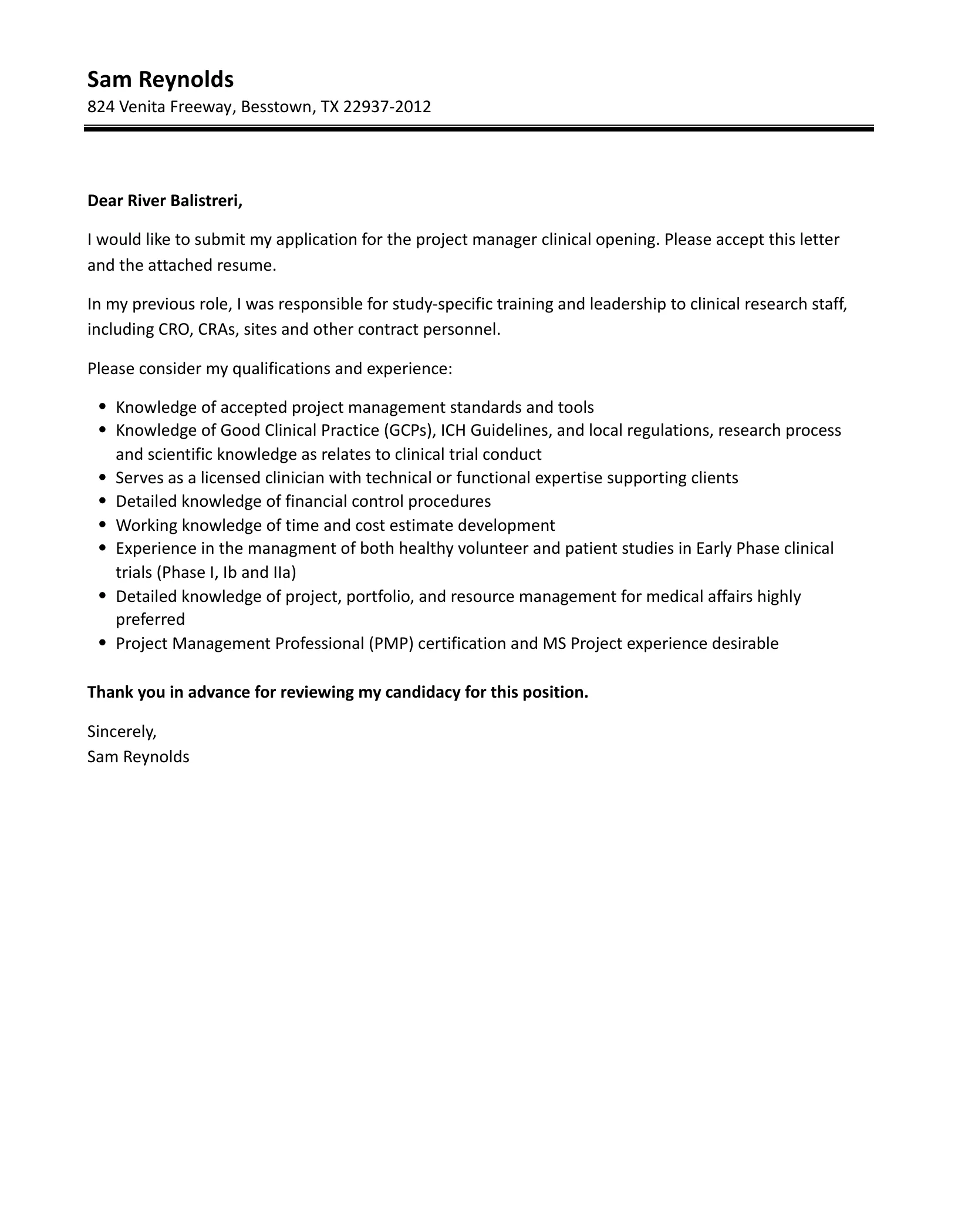Crafting a Compelling Clinical Project Manager Cover Letter
A well-written cover letter is your first opportunity to make a strong impression and secure an interview for a clinical project manager position. It’s more than just a formality; it’s a chance to showcase your unique qualifications, experience, and passion for the role. This guide will walk you through the process of creating a cover letter that not only highlights your skills but also resonates with the hiring manager and sets you apart from other candidates. By following these steps, you can significantly increase your chances of landing your dream job in clinical project management. Remember, the goal is to present yourself as the ideal candidate who can contribute to the success of their projects and their organization. A compelling cover letter should be able to provide the first impression to make you stand out from a pool of candidates.
Understanding the Role of a Clinical Project Manager
Before you start writing your cover letter, you must understand the role of a clinical project manager. This understanding will help you tailor your letter to the specific requirements of the job and demonstrate your genuine interest in the position. Clinical project managers are crucial in ensuring clinical trials are conducted efficiently, ethically, and according to regulations. They oversee all aspects of clinical trials, from planning and execution to data analysis and reporting. A clear understanding of this role provides the foundation for your letter to get the attention of the hiring manager. Understanding the core responsibilities and skills will enable you to make your cover letter effective.
Key Responsibilities of a Clinical Project Manager
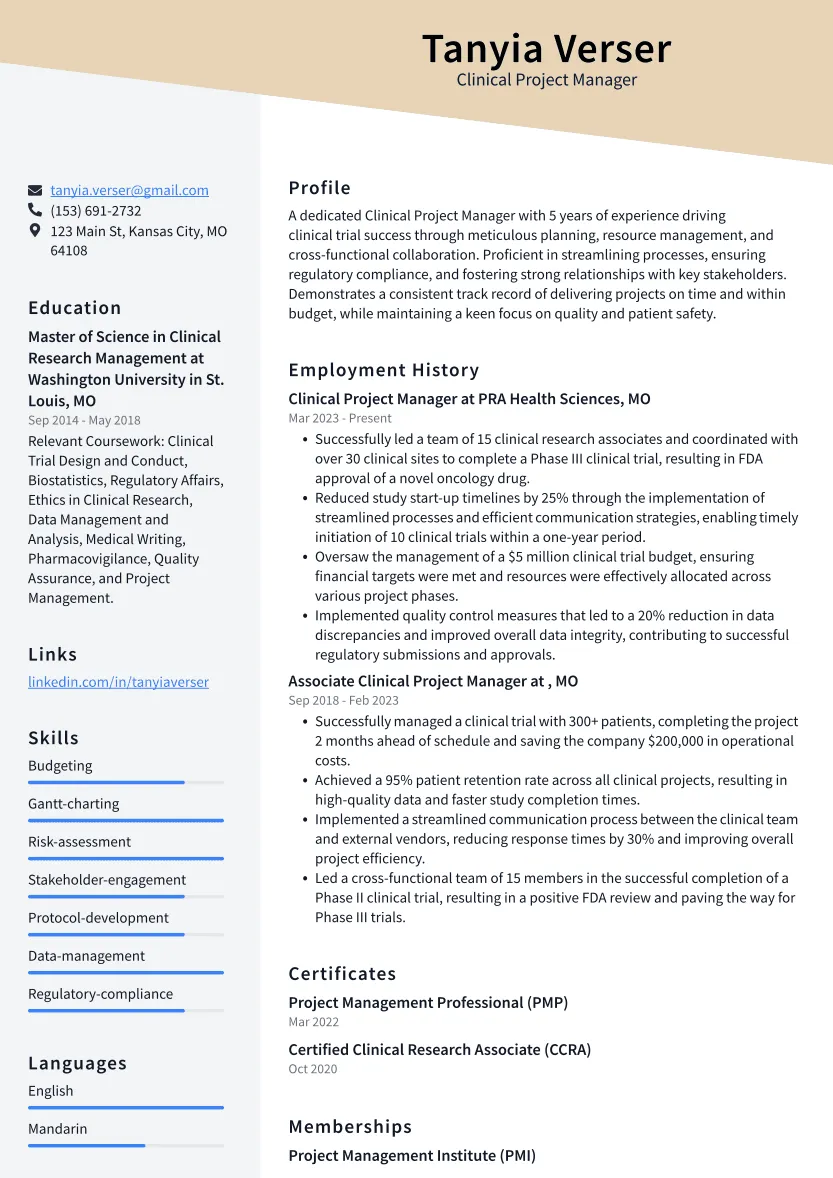
Clinical project managers are responsible for a wide range of tasks, including but not limited to project planning, budget management, timeline adherence, risk assessment, and team leadership. They ensure that trials are conducted in compliance with Good Clinical Practice (GCP) guidelines and relevant regulations. They also manage the study team, including clinical research associates (CRAs), data managers, and other specialists. They work closely with investigators, research sites, and sponsors to ensure the successful execution of clinical trials. Your cover letter should address those skills which matches the responsibilities of the role.
Essential Skills for a Clinical Project Manager
Key skills include project management, communication, problem-solving, leadership, and strong knowledge of clinical trial processes. A clinical project manager needs to be organized, detail-oriented, and able to handle multiple tasks simultaneously. They must possess strong interpersonal skills to effectively manage teams, communicate with stakeholders, and build relationships with research sites. Furthermore, they should be proficient in using project management software and familiar with regulatory requirements. Your cover letter is an excellent opportunity to highlight these skills with proof and examples.
Researching the Company and the Position
Before writing your cover letter, thoroughly research the company and the specific position. Visit the company’s website, review their mission, values, and recent news. Understanding the company’s culture and projects will enable you to tailor your cover letter to their specific needs and demonstrate your genuine interest. Also, carefully read the job description, paying close attention to the required qualifications, skills, and responsibilities. Identify keywords and phrases used in the job posting and incorporate them into your cover letter. This approach will show that you understand what the company is looking for and that you are a good fit for the role.
Tailoring Your Cover Letter to the Job Description
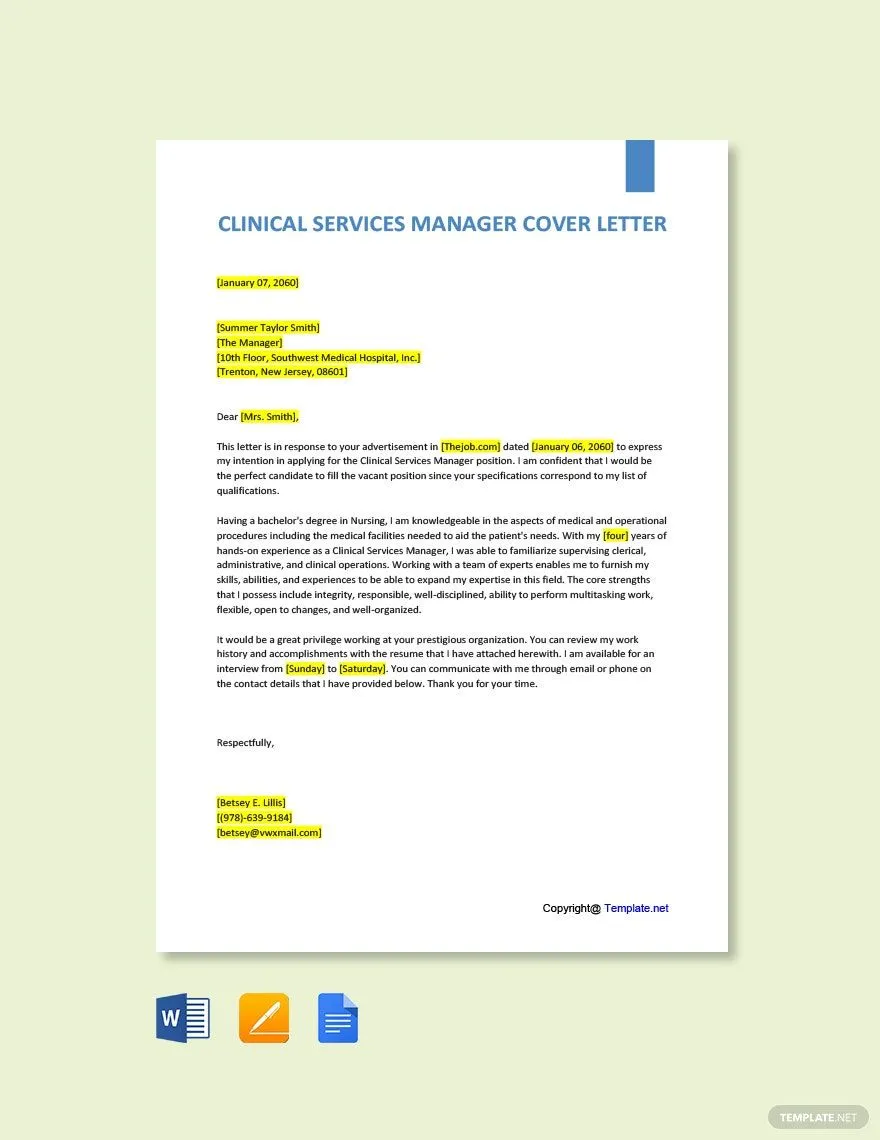
Customizing your cover letter for each job application is crucial. Generic cover letters rarely make a strong impression. Instead, use the job description as your guide to highlight the most relevant experience and skills. Address each requirement mentioned in the job posting and provide examples of how you have demonstrated those skills in previous roles. When adapting your cover letter, show the hiring manager that you have taken the time to understand the company’s needs. It demonstrates your dedication and ability to follow instructions. Customization also helps ensure your cover letter aligns with the company’s priorities.
Highlighting Relevant Experience and Achievements
Your cover letter should showcase your relevant experience and achievements. Provide specific examples of how you have successfully managed clinical trials, led teams, and achieved positive outcomes. Quantify your achievements whenever possible, using numbers to illustrate your impact. For instance, mention the number of trials you’ve managed, the size of the teams you’ve led, and any cost savings or efficiency improvements you’ve achieved. Highlighting your accomplishments will make your cover letter more compelling and demonstrate your ability to deliver results. Provide proof and relevant achievements will help you to get interview.
Structuring Your Cover Letter Effectively
A well-structured cover letter is easy to read and conveys your message clearly. Use a standard business letter format with a clear introduction, body paragraphs, and conclusion. Keep your paragraphs concise and to the point. Ensure that your cover letter is well-organized, with each section serving a specific purpose. Organize your thoughts logically and use headings and subheadings to guide the reader. This will help the hiring manager quickly grasp your key qualifications. The main idea is to showcase the candidate based on his/her skills, so choose them carefully based on the job requirements. Make sure to highlight your work experience, so that it makes you stand out.
The Introduction Making a Strong First Impression
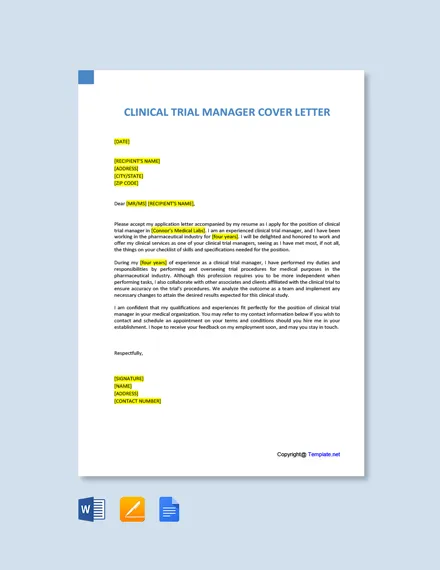
The introduction is your opportunity to grab the hiring manager’s attention. Start with a strong opening sentence that immediately states your interest in the position and highlights your most relevant qualifications. Mention how you learned about the job and why you are excited about the opportunity. Clearly state the position you are applying for and briefly mention your years of experience. The introduction is your chance to make a great first impression and encourage the hiring manager to continue reading. Mention your key strength and express your enthusiasm, so that it can make an impact on the hiring manager.
Showcasing Project Management Experience
In the body paragraphs, detail your project management experience. Describe your experience with project planning, timeline management, budget oversight, and risk assessment. Provide specific examples of projects you have managed, including the size of the trials, the complexity of the protocols, and the outcomes achieved. Highlight your experience with different phases of clinical trials and any experience with regulatory submissions. Focus on the achievements and results, and use the STAR method (Situation, Task, Action, Result) to provide details. This will make it easier for the hiring manager to comprehend your experience and capabilities.
Demonstrating Leadership and Teamwork Skills
Clinical project management involves leading and collaborating with diverse teams. Highlight your leadership abilities and your ability to work effectively with others. Describe your experience with team building, conflict resolution, and communication. Explain how you have motivated and guided teams to achieve project goals. Use examples to illustrate your leadership style and your ability to manage and motivate teams. Showcase your teamwork skills and your ability to collaborate with stakeholders. Teamwork and leadership are essential skills, and highlighting these on your cover letter is critical.
Quantifying Achievements and Results
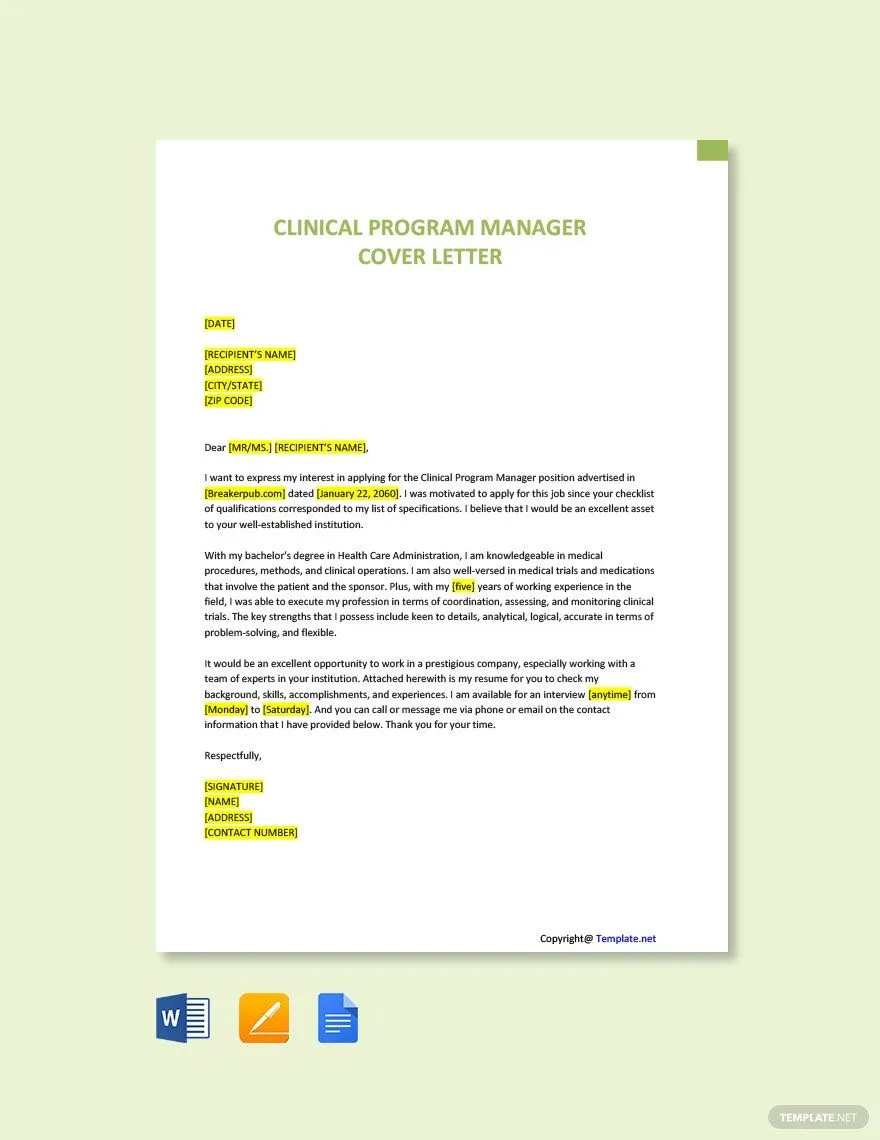
Use numbers and data to quantify your achievements. For instance, mention the number of clinical trials you have successfully managed, the percentage of projects completed on time and within budget, and any efficiency improvements you have achieved. Quantifying your achievements provides concrete evidence of your skills and the value you can bring to the role. These metrics allow hiring managers to quickly understand your accomplishments and your impact on previous projects. Provide metrics such as budget management, timeline adherence, and risk mitigation to your hiring manager.
The Body Paragraphs Detailing Your Qualifications
The body paragraphs of your cover letter should provide detailed information about your qualifications. Address the specific requirements and skills mentioned in the job description, and provide examples of how you have demonstrated those skills in previous roles. Structure your paragraphs logically, with each paragraph focusing on a particular skill or experience. Use action verbs to describe your responsibilities and achievements. Tailoring your cover letter is important to get the attention of the hiring manager. To showcase your skills, you must use the details and examples.
Addressing Specific Requirements and Skills
Carefully review the job description and address each requirement and skill. Highlight your experience with relevant software, regulations, and methodologies. Provide specific examples of how you have demonstrated the required skills in your previous roles. Use keywords from the job description to show that you meet the job requirements. Your cover letter must specifically show how your qualifications align with the job’s needs. This ensures that your cover letter meets the hiring manager’s expectations and improves your chances of getting hired.
Providing Concrete Examples of Success
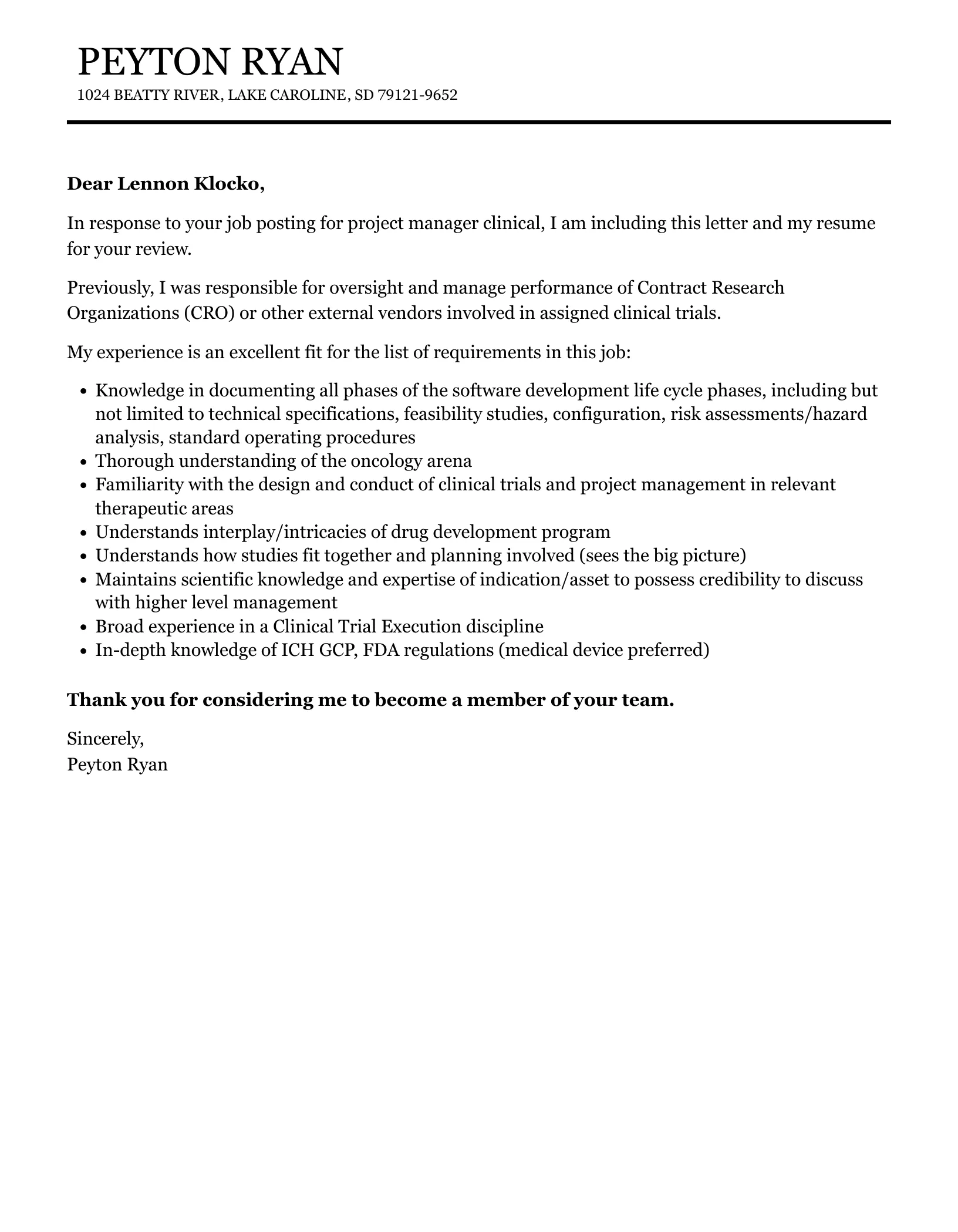
Instead of simply stating that you possess certain skills, provide concrete examples of your success. Use the STAR method to describe specific situations, the tasks you were assigned, the actions you took, and the results you achieved. For instance, describe a time when you successfully managed a challenging project, overcame an obstacle, or implemented a process improvement. Use these examples to demonstrate your problem-solving abilities, your ability to handle complex situations, and your ability to deliver positive outcomes. Providing relevant examples helps to convince the hiring manager that you are a good fit for the job.
The Conclusion Expressing Enthusiasm and Call to Action
The conclusion should express your enthusiasm for the position and reiterate your interest in the company. Summarize your key qualifications and restate your interest in the role. Include a clear call to action, such as stating that you are available for an interview and providing your contact information. Thank the hiring manager for their time and consideration. Proofread your letter before sending it. A well-written conclusion should convey your eagerness and desire to contribute to the company’s success. The call to action indicates that you are ready for the next step.
Proofreading and Formatting Your Cover Letter
Proofreading and formatting are critical steps. Before submitting your cover letter, carefully proofread it for any grammatical errors, spelling mistakes, or typos. Ensure that your letter is formatted professionally, with a clear font, appropriate margins, and consistent spacing. Use a font that is easy to read, such as Times New Roman or Arial. Keep your letter concise and avoid lengthy paragraphs. Get a second pair of eyes to review your letter for clarity and accuracy. These steps will help you to avoid any careless mistakes, and it is more likely to get your cover letter noticed by the hiring manager. A well-formatted and proofread cover letter reflects your attention to detail and professionalism.
Common Mistakes to Avoid in a Cover Letter
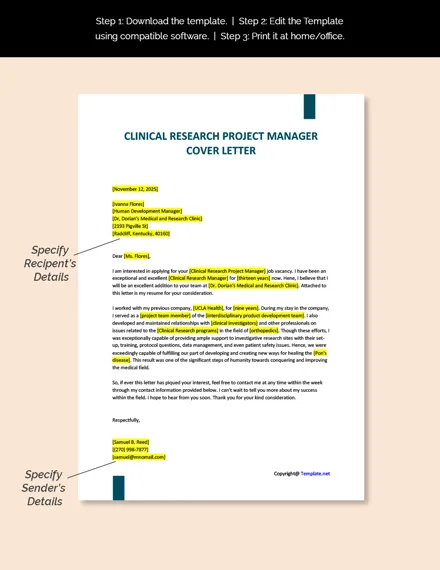
Avoid common mistakes that can undermine your cover letter. Do not use generic or irrelevant content. Do not repeat the same information from your resume. Avoid typos, grammatical errors, and formatting inconsistencies. Refrain from using negative language or criticizing previous employers. Do not write too much about yourself without focusing on the company’s needs. Make sure your tone is professional and enthusiastic. Avoiding these mistakes can significantly improve your chances of getting noticed.
Ensuring Clarity and Professionalism
Ensure clarity and professionalism in your cover letter. Write in a clear, concise, and engaging manner. Use professional language and avoid slang or jargon. Focus on the key skills and achievements that make you the ideal candidate. Proofread your cover letter carefully to ensure that it is free of errors. Maintain a positive tone and express your enthusiasm for the role and the company. Ensure that the information you provide is accurate and relevant. A clear and professional cover letter reflects your attention to detail and commitment to quality. The hiring manager should be able to easily understand your skills and qualifications.
